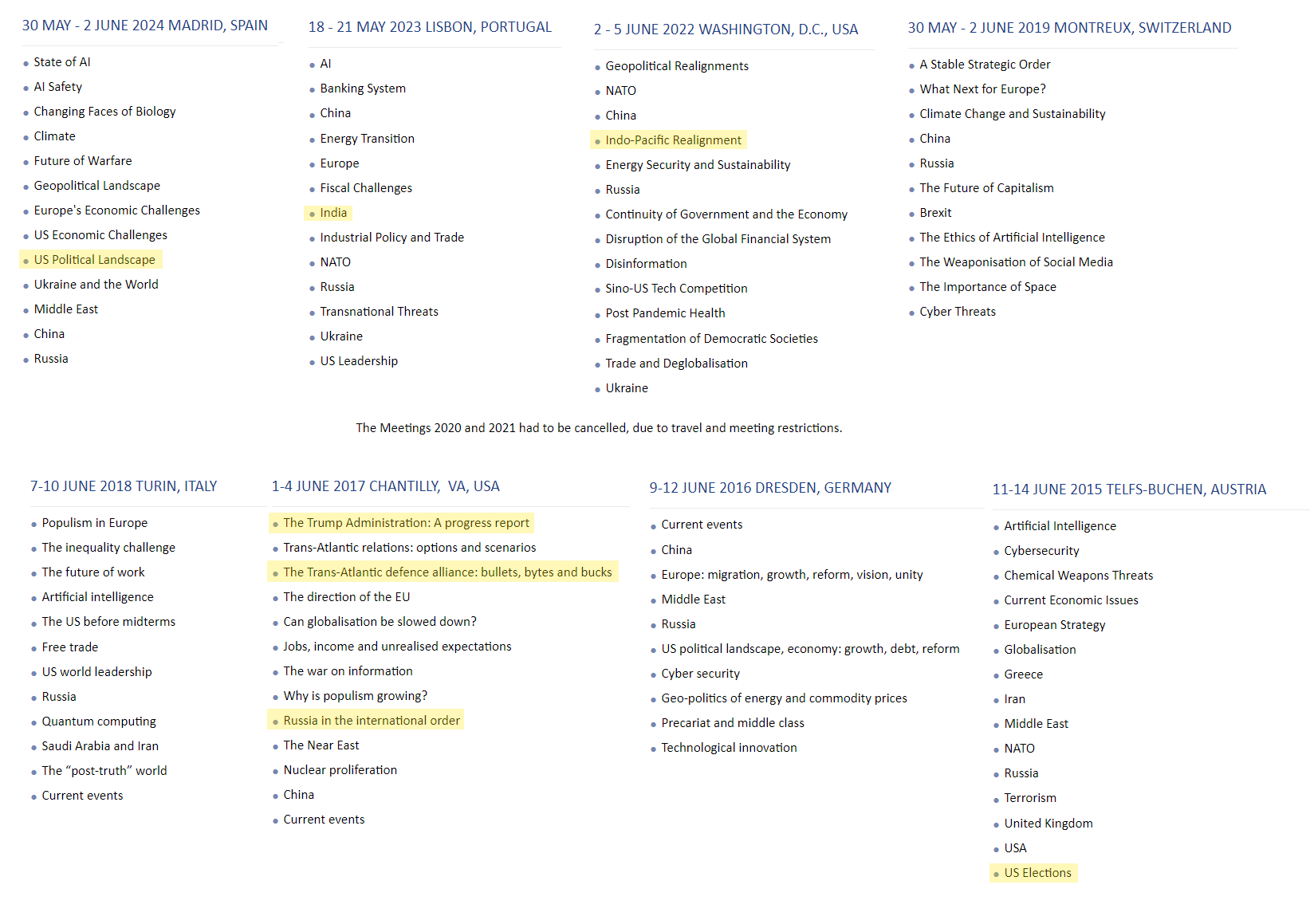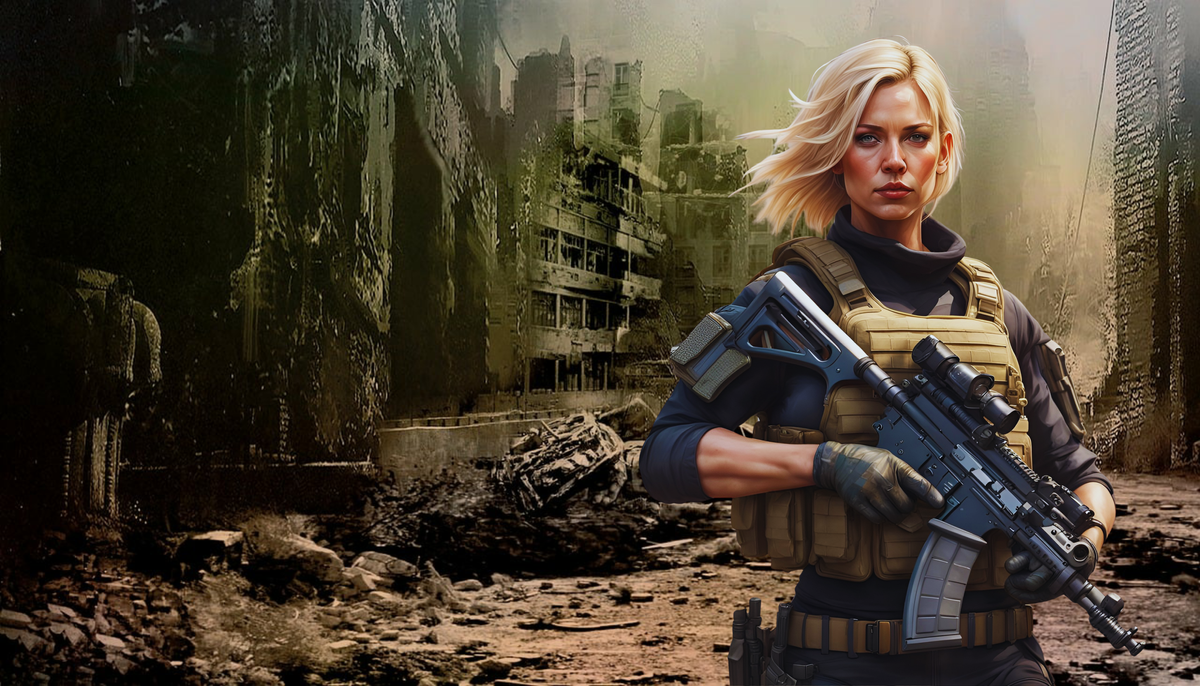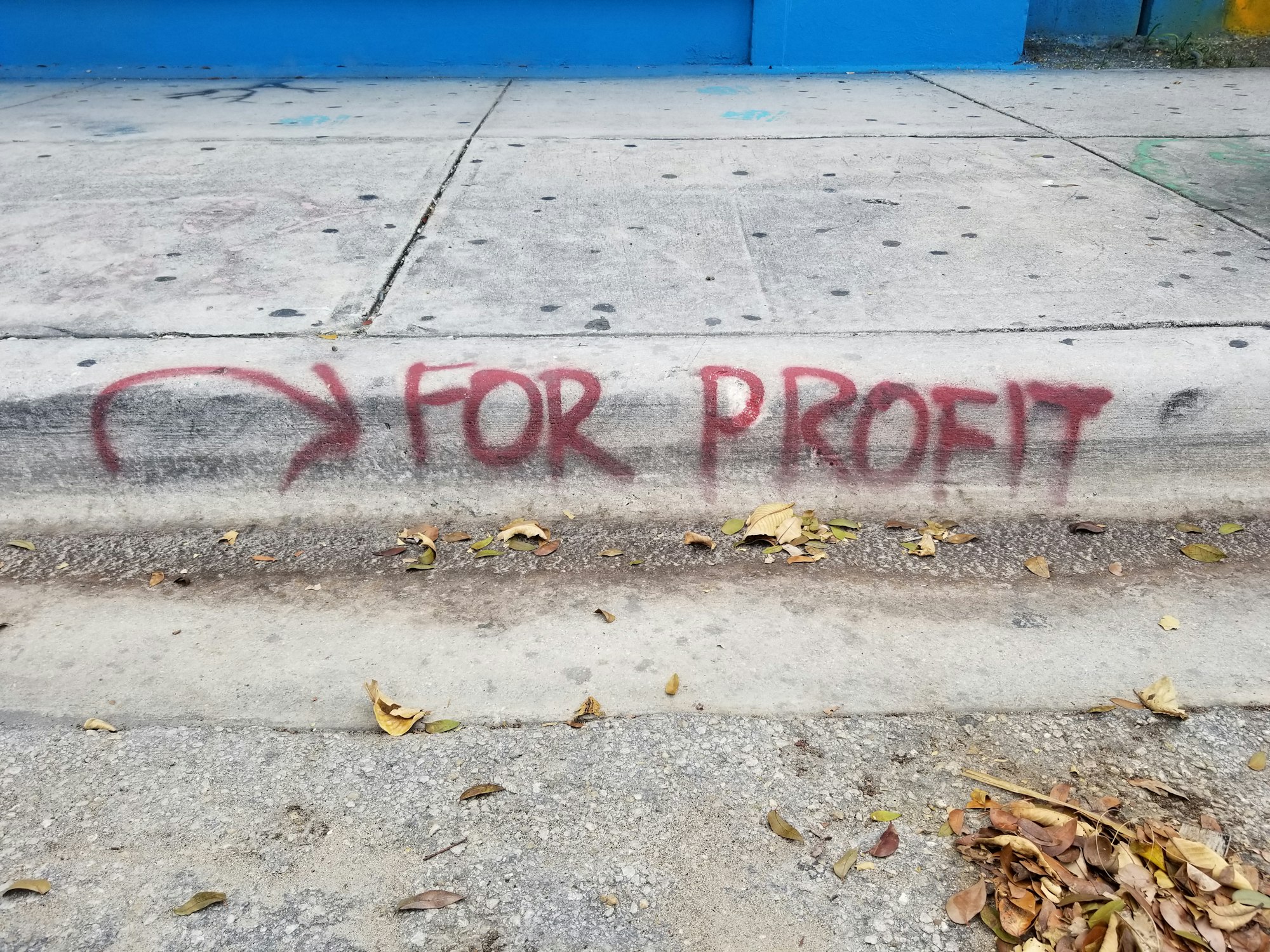What is the Deep State: Indepth Analysis Inside the Shadowy Web of Power, Control, and Profits
Dive into the shadowy world of the Deep State—its hidden structures, powerful networks, and the far-reaching impact on global events and control.

Hiranyakashipu ruled chaos. His power fed on fear. His brother’s death by Vishnu ignited a fire of vengeance. The demon sought immortality, shaking the cosmos with relentless penance.
Brahma relented. No man. No beast. No death indoors or outdoors. Not by day or night. No weapon could harm him. Invincible—or so he thought.
Armed with near-immortality, Hiranyakashipu declared himself god.
His tyranny engulfed the worlds. Temples fell. Ashrams burned. Faith was hunted. Yet, his son Prahlada stood unbroken. A child, fearless in devotion to Vishnu.
“You defy me?” roared the king. Twilight fell. His rage peaked. “Where is your god now?”
Finally, in a climactic moment, Vishnu appeared in his Narasimha (half-man, half-lion) avatar to restore cosmic balance.
A roar answered.
From a stone pillar emerged Narasimha—half-man, half-lion. Claws tore flesh. On the threshold. Neither indoors nor outdoors. At dusk. Neither day nor night.
Chaos died with Hiranyakashipu. Dharma rose. Order prevailed.
Power rooted in chaos is fleeting. Truth endures. Always.
Please Contribute to Drishtikone
What we do takes a lot of work. So, if you like our content and value the work that we are doing, please do consider contributing to our expenses. Choose the USD equivalent amount in your own currency you are comfortable with.
The Invisible Power Structures
Power. Control. Influence.
Behind the visible structures of modern governance lies a complex web of organizations and groups. Some operate in plain sight, others in shadows. Their reach extends across continents, transcending national boundaries and traditional power structures.
These entities shape our world in ways both subtle and profound. They gather in exclusive chambers, from Swiss mountaintops to ivy-covered halls. Their decisions ripple through global markets, political systems, and social institutions.
Some call them the architects of a new world order. Others dismiss such claims as mere conspiracy. Yet their existence is undeniable.
Their membership lists read like a who's who of global influence: presidents, prime ministers, banking dynasties, media moguls, and industrial titans.
This is an examination of these powerful groups. Their histories. Their methods. Their influence. Whether viewed as guardians of global stability or shadowy puppet masters, their impact on our world is undeniable.
Here is a quick brief on the organizations, think-tanks, groups, and informal agents that combine together as what is often referred to as the "Deep State".
Crown Council of 13
The Crown Council of 13 is often described as a secretive cabal of powerful families who allegedly control global finance, politics, and resources. These families are said to trace their lineages back to ancient and medieval bloodlines and maintain their influence through carefully arranged marriages and business alliances.
Committee of 300
The Committee of 300, also known as "The Olympians," is alleged to be one of the most powerful secret societies. It is alleged that this elite group exercises control through major financial institutions, multinational corporations, and intelligence agencies to shape global policies and maintain their power structure.
Bilderberg Group
The Bilderberg Group is a highly influential organization that holds secretive annual meetings attended by approximately 130 elite participants from various sectors. These closed-door gatherings, conducted under strict privacy rules, have led to numerous theories about their true purpose and impact on global affairs. While its purpose is officially described as fostering dialogue between Europe and North America, critics argue it serves as a hub for behind-the-scenes decision-making
Council on Foreign Relations (CFR)
The Council on Foreign Relations (CFR) is an influential organization that brings together leaders from politics, business, and academia. While it presents itself as a public policy forum, some experts suggest it plays a key role in shaping U.S. foreign policy toward global integration.
Trilateral Commission
The Trilateral Commission was established in 1973 as a non-governmental organization aimed at fostering closer cooperation between North America, Europe, and Asia. While its stated mission is promoting international dialogue, critics argue it serves as a vehicle for advancing global governance at the expense of national sovereignty.
Club of Rome
The Club of Rome is a global think tank established in 1968, focusing on major challenges facing humanity, particularly sustainability and population issues. While it presents itself as addressing crucial environmental and demographic concerns, critics view it as an organization seeking to implement global control mechanisms through resource management policies.
Freemasons
Freemasonry, one of the world's oldest fraternal organizations, combines ancient traditions with modern networking. While primarily focused on personal development and philanthropy, its private ceremonies and influential membership have fueled speculation about its role in shaping world events.
Illuminati
The Illuminati originated as the "Order of the Illuminati," founded by Adam Weishaupt in Bavaria in 1776. Despite its disbandment in 1785, the term persists in modern conspiracy theories as a supposed elite organization controlling global affairs through financial and political manipulation.
World Economic Forum (WEF)
The World Economic Forum (WEF), established in 1971, has evolved into a significant platform where global elites convene annually in Davos. While officially promoting stakeholder capitalism and global cooperation, it has faced increasing scrutiny over its "Great Reset" initiative and "Fourth Industrial Revolution" agenda.
Recent narratives suggest the WEF's push for digital IDs, central bank digital currencies, and climate policies represent steps toward a technocratic world order.
Skull and Bones
Skull and Bones, founded in 1832, secret society at Yale University, known for its powerful alumni, including U.S. presidents and business leaders.
It is often linked to claims of great influence over U.S. governance.
Chatham House (Royal Institute of International Affairs)
Chatham House, is a London-based think tank focusing on international affairs, founded in 1920, is renowned for developing the "Chatham House Rule," which allows for frank discussions by keeping speaker identities confidential.
It is similar to the CFR, it's criticized as a vehicle for shaping global policies behind closed doors.
The organization has been particularly vocal about climate change, global governance structures, and international monetary reform.
The institute regularly publishes influential papers on geopolitical issues and maintains close ties with similar organizations worldwide. Critics point to its significant role in promoting European integration, sustainable development policies, and what some view as a globalist agenda through its extensive research programs and high-level networking events.
Round Table Groups
The Round Table Groups, established in the late 19th century, were Allegedly created by Cecil Rhodes and other British imperialists to promote British global dominance. They continue to operate through modern think tanks and policy institutes.
These groups maintain influence through affiliated organizations and members in key positions within international bodies. Their legacy is visible in contemporary global institutions and policy-making processes, particularly in areas of international relations and economic cooperation between Commonwealth nations.
Consolidating the Structure
Let us put all this into an easily understandable illustration. We are looking at a 5 tier structure which starts with the Global Elite - a cabal which sets the overall agenda for the world - and ends with activities on the ground by organizations on the ground. Those toolkits, that we have been used to? Well these are the organizations which implement them.

To understand the power of these seemingly legitimate world, we need to dig a bit deeper. Let us start with one. The Bilderberg Group.
Bilderberg Group: "Fostering Dialog" or Espionage and Traps?
In the shadowy realm of global power, a mysterious entity asserts its influence.
The Bilderberg Group, an elite assembly of leaders from Europe and North America, convenes annually to shape the fate of the world.
Founded in 1954 by Prince Bernhard of the Netherlands, the group's stated purpose is to foster dialogue and understanding between continents. But beneath this benevolent façade lies a labyrinth of secrecy and exclusivity.
The first meeting took place at the Bilderberg Hotel in Oosterbeek, Netherlands, from which the group derives its name.
Each year, a select group of approximately 120-150 participants receives an invitation to join the ranks of the powerful. They gather under the Chatham House Rule, a veil of confidentiality that permits the free exchange of ideas while shielding the identities of the speakers. It is here, in this inner sanctum, that the architects of global policy converge to discuss the most pressing issues of our time: economic trends, technological advancements, and the delicate balance of geopolitics.
But it is precisely this secrecy that has ignited a firestorm of criticism and conspiracy theories. Detractors argue that the group's closed-door meetings and lack of transparency enable the manipulation of global policies without public oversight. They whisper of a "New World Order," where corporate interests reign supreme and democratic governments are reduced to mere puppets.
The group's defense is that the closed format allows for candid discussions, unencumbered by the scrutiny of the media. They emphasize that no formal policy decisions are made during the meetings, and that the gatherings are merely exploratory. Yet, the absence of transparency has only fueled the flames of suspicion.
What little information is publicly disclosed only serves to heighten the enigma. The participant list, a veritable Who's Who of global power brokers, is released each year. The agenda topics, vague and broad, offer only a glimpse into the discussions. It is a carefully crafted illusion of transparency, designed to placate critics while maintaining the veil of secrecy.
As the Bilderberg Group works between influence and scrutiny, they are watched carefully.
There are many participants in every Bilderberg meeting. Some of the interesting participants in Bilderberg meetings include names like (Source: 2022 participants / 2023 participants / 2024 participants):
- Sam Altman: CEO, OpenAI (2022)
- William Burns: Director, CIA (2022)
- Satya Nadella: CEO, Microsoft Corporation (2023)
- Arvind Subramanian: Senior Fellow in International and Public Affairs, Brown University and former Chief Economic Advisor to the Government of India from 2014 through 2018.(2023)
- Eric Schmidt: Former CEO and Chair, Google LLC (2022, 2023, 2024)
- Peter Thiel: President, Thiel Capital LLC (2023)
- Jens Stoltenberg: Secretary General, NATO (2022, 2023, 2024)
- Fareed Zakaria: Host, Fareed Zakaria GPS (2024)
Here are some other attendees over the years.
Political Leaders:
- Bill Clinton: Attended in 1991 as Governor of Arkansas, prior to his presidency.
- Margaret Thatcher: Participated in 1975 before becoming the UK Prime Minister.
- Angela Merkel: Attended in 2005, the same year she became Chancellor of Germany.
- Emmanuel Macron: Participated in 2014 before his presidency.
- Tony Blair: Attended in 1993 as a Member of Parliament, prior to becoming UK Prime Minister.
Royalty:
- Prince Charles: Attended in 1986.
- Prince Philip: Participated in 1965 and 1967.
- King Willem-Alexander of the Netherlands: Attended in 2022.
Business Leaders:
- Jeff Bezos: Founder of Amazon, attended in 2011.
- Eric Schmidt: Former CEO of Google, regular attendee.
- Satya Nadella: CEO of Microsoft, attended in 2023.
- Peter Thiel: Co-founder of PayPal and Palantir Technologies, steering committee member.
Academics and Media Figures:
- Henry Kissinger: Former U.S. Secretary of State, long-time participant.
- Zanny Minton Beddoes: Editor-in-Chief of The Economist, attended in 2023.
- Niall Ferguson: Historian, attended in 2023.
The topics that have been discussed (as shared by their website) are very instructive.

Do you see something interesting? China and Russia have continuously been part of the Bilderberg agenda since 2016!
So if you closely see, this Group has a major - though covert - impact on the world of geopolitics and economics.
- Networking and Agenda-SettingBilderberg serves as a networking hub where key decision-makers can form alliances and exchange ideas.Although it does not issue official statements or policies, the discussions can influence the attendees' decisions in their respective domains.
- Historical InfluenceIt has been claimed that the creation of the European Union and the establishment of policies like the Euro currency were discussed in early Bilderberg meetings.It has also been suggested that the group's discussions have influenced transatlantic relations and major economic strategies.

- Control over Key SectorsWith attendees spanning industries like technology, finance, energy, and defense, the group has significant indirect influence over global markets and technological advancements.
But is this all to it these meetings?
Haven for Elite Sex Slaves?
Now let us look at this world of Bilderberg Group meetings from another perspective. Anneke Lucas.
Anneke was groomed at a spy for and by the elite. The initial years of Anneke Lucas's life were marked by an unsettling duality that many can hardly fathom. On one hand, she was just a child; on the other, she became embroiled in a world far more sinister than any innocent soul should ever encounter.
In shocking detail, Anneke shares the details horrific world of sex trafficking that ensnared her and countless others.
She discusses how she was trafficked at the Bilderberg Group to the attendees, specifically Mr. Rothschilds by David Rockefeller.
From the 1972 Bilderberg Group's meeting participants, you can clearly see who they were.

With that as the context, now watch this video.
Here is some of the conversation in text.
of ..to survive playing this game of whatever they needed me to do I was doing it. And then in 1972 suddenly three years later I got you know treated as very special and this treatment had a lot to do with the excitement that David Rockfeller felt over the fact that he he loved being behind the scenes creating this slave this Elite sex slave who was going to make him millions.
And I was already sold in the first year in that year in that year till I till I you know I gave my will to the Rothchild and he asked specifically you know he asked will you be part of the family.. and I said yes and he asked me to say I will give my will and um a year later I did not give my will anymore that's why I'm here.
But I got yeah why would Rockefeller do that if he's got billions. At the time that's a very powerful family he was a he was a pedophile. First of all and these families um shout and Rothschilds I don't think was a pedophile but he was more powerful but he was not a pedophile.
David Rockefeller was a pedophile there's a lot of survivors I work with survivors there are a lot of survivors out there of David Rockefeller.
..but I saw him in a certain light and I've met one other person now that we're named David Rockefeller we can I can tell you that the place where I was taken in Germany. in Hiedelberg the doctor that was in charge there Hans Harmsen I have met another Survivor that was also a special project of David Rockefeller and Hans harmson who was the doctor in charge there she was there too as a special project of him and she also came across Hans Harmsen
She discusses this man named Hans Harmsen. He was the doctor who was in charge of the mind control facility in Heidelberg.

Now Harmsen was no innocent guy who had suddenly tripped into this dark world. He had a history.

It maybe interesting that CIA ran a mind control program - Project MK-ULTRA It was a covert CIA mind-control and chemical interrogation research program conducted during the Cold War. The program involved experiments on unwitting subjects, including soldiers and prisoners, to develop effective methods of mind control and interrogation.

Isn't it intriguing that the Church Committee and Rockefeller Commission reported on the CIA activities in 1975 investigations? While the Church Committee was chaired by the then Idaho Senator Frank Church, the Rockefeller Commission was chaired by the then US Vice President Nelson A Rockefeller.
Nelson Rockefeller, the 41st Vice President of the United States (1974–1977), was the brother of David Rockefeller.
So, the question one needs to ask is if, per Ms Lucas, David Rockefeller was using the services of Hans Harmsen, a Nazi sympathizer, for Mind Control. Something that was being used by the US intelligence agency, the CIA until that time?
Club of Rome - Tool of Control or Mirror of Our Times?
In 1968, two powerful people — Aurelio Peccei (Italian industrialist and philanthropist) and Alexander King (British Chemist and Director-General for Scientific Affairs at the Paris-based Organisation for Economic Co-operation and Development (OECD)) — gathered minds in Rome to create a powerful organization.
They called it the Club of Rome.
A think tank, a warning bell, all under the pretext of a plea for action.
Their mission was stated thus: to illuminate humanity’s most pressing challenges—environmental degradation, overpopulation, economic fragility, and inequality.
Their message was sustainability. Beyond GDP, beyond profit, they called for a new model. One where human systems and natural ecosystems worked in harmony. A balance where equity triumphed over greed.
Many voices reviewed their views.
Alarmists, some said. Neo-Malthusians, others cried. Yet, their voice persisted.
Reports like Beyond the Limits and Earth4All pressed on.
From Switzerland, their ideas were shared — transforming climate policy, shaping global goals like the UN’s SDGs.
That was known as the climate change agenda. Something that Vivek Ramaswamy has talked about continuously. Just watch this clip as see the reactions of every other Republican candidate on stage when he calls that out.
A unison of cacophony. Paid robots shutting down the challenger?
Today, they remain both revered and ridiculed. A stark reminder. The Club of Rome isn’t just a think tank. It’s a tool!
We will read some more about it later.
Trilateral Commission - Control in Shadows
A vision born in 1973.
A banker and a thinker—David Rockefeller and Zbigniew Brzezinski—joined hands.
Their mission: a new axis of power.
They called it the Trilateral Commission.
North America. Western Europe. Japan.
Three pillars of the democratic world. Later, the axis widened to embrace the Asia-Pacific. Cooperation, they said, was the goal.
Interdependence demanded understanding. Economic policy, security, governance—each thread intricately tied to the other.
The Commission sought to weave these threads into a cohesive fabric of collaboration.
Its structure mirrored its ambition. Regional groups—North America, Europe, Asia-Pacific. Leaders handpicked, not elected. Membership: exclusive, invitation-only. Power concentrated in 400 elite voices—politicians, business magnates, scholars, media moguls. Meetings behind closed doors. Strategies debated. Policies whispered.
Critics call it a veil for global elites. Accusations of secrecy. Allegations of shaping economies and governments in the shadows. Conspiracy theorists whisper of a hidden hand manipulating world affairs.
But the Commission denies it. It says they promote dialogue, not domination. Understanding, not control.
In a world fractured by politics and conflict, what is the real role of the Trilateral Commission?
Its influence is undeniable. Its intentions remain a riddle. A bridge—or a throne?
One theme has emerged until now - how Wars and Sex Slavery define the power structures of the elite - the Deep State.
Let us unpack that a bit.
Sex Slavery and Human Trafficking and Links to Wars
The most dangerous and horrible aspect of American society that does not get talked about much is child and sex slavery. As per the Child Crime Prevention and Safety Center in New York State around 840,000 children go missing each year in the US! (Source: WHEC/News10).
As I documented in the in-depth piece I wrote earlier this year, child sex trafficking—the buying and selling of women, young girls and boys for sex, some as young as 9 years old—has become big business in America. It is the fastest growing business in organized crime and the second most-lucrative commodity traded illegally after drugs and guns. Adults purchase children for sex at least 2.5 million times a year in the United States. (Source: The Heart of Darkness: The Sexual Predators in the US Elite / Scoop World)
The statistics associated with this horrific industry are terrifying!

This is within the US society during "normal times".
Wars and Sex Slavery
War is chaos. And in chaos, humanity’s darkest shadows emerge. Sex slavery and human trafficking thrive in the ashes of conflict, feeding on shattered lives and broken societies.
Soldiers march; women vanish.
Borders blur; innocence is bartered.
Wars displace millions, creating an endless supply of vulnerable victims.
Traffickers profit from bloodshed, their empire built on tears and chains.
Global conflicts, you see, are not just battles for land—they are battlegrounds for human souls.
Behind every conflict lies a silent war, waged in shadows, where humanity is the casualty.
Let us look at some concrete examples.
One of the direct links between wars that the US fights and sex trafficking and slavery is prostitution that is organized to satisfy the US military.

One of the most blatant cases of this was in South Korea.
The presence of U.S. military personnel in South Korea, particularly after the Korean War (1950–1953), had significant social and cultural impacts. One of the controversial issues tied to this presence is the promotion of prostitution around U.S. military bases.
The South Korean economy was so devastated that the government at that time used girls to satisfy the American personnel to get the badly needed dollars!
The South Korean government trained the girls in the 1960s and 1970s under the guise of being “patriots” or “civilian diplomats.” Their true role, however, was to serve as prostitutes near American military bases.

In fact, in a memorandum sent out as recently as 2014, US Army Commander General Curtis Scaparrotti banned the practice of prostitution and human trafficking!

Here is the PDF version of this memorandum for your reading.
But this is not unique to the US military bases. The UN Peacekeeping missions, apparently established to restore peace and law are ravaged by the most rampant crimes of sex and human trafficking.

Rape of a child for just two eggs?!
The predatory practices of US and European militaries in both war-zones peaceful missions is one aspect of the link between wars and sex slavery / human trafficking. But there is a more sinister aspect that is usually missed.
Wars create displacements and "opportunity for human and sex trafficking".
What I saw on the ground, on an individual level, is magnified by hundreds of thousands or millions. And what we're talking about as I said is some 6 million people, mostly women and children coming in states of extreme vulnerability, but that's not the only risk, is the current vulnerability. What we also know is that traffickers and organized criminals and individuals have traditionally exploited people in migration flows. They have preyed upon those flows to find vulnerable people, to exploit for profit. And we've seen that back in 2015, 2016 in the migration crisis involving Europe and the countries around it. And time and time again, this happens. We've also seen it in other conflicts. And so what we know is that those risks are now magnified even more. And then what we also know is that historically, Ukrainians are among the most exploited nationalities in Europe, even before this war. (Source: The War in Ukraine’s Human Trafficking Risks / Jones Day)
Wars like that in Ukraine bring the sex trafficking vultures swooping in to take advantage of a situation where millions are destitute and vulnerable.
The profits earned from human trafficking are huge. International Labor Office (ILO) estimates that over $31 billion is earned from trafficking victims.

The most effective way to understand human trafficking in general and sex trafficking, in particular, is by looking at it as a "Market System".

The mechanism is simple.
Even when the people in the US do not want war, these are unleashed by the politicians because they are beholden to the Military Industrial Complex.
Our economic war-dependence is matched by political war-dependence. Many members represent districts with contractors that supply homeland security needs and our on-going wars. Even with polls showing that the majority of Americans are opposed to continuing the wars in Iraq and Afghanistan, the new military-industrial complex continues to easily muster the necessary support from both Democrats and Republicans in Congress. It is a testament to the influence of this alliance that hundreds of billions are being spent in Afghanistan and Iraq while Congress is planning to cut billions from core social programmes, including a possible rollback on Medicare due to lack of money. None of that matters. It doesn’t even matter that Afghan President Hamid Karzai has called the US the enemy and said he wishes that he had joined the Taliban. Even the documented billions stolen by government officials in Iraq and Afghanistan are treated as a mere cost of doing business. (Source: Big money behind war: the military-industrial complex / Al Jazeera)
The payday for the war machinery is huge. Avenues abound.
- Arms Sale
- Human Trafficking
- Peacekeeping and Restoration scams
But the powerful do not just keep waiting for the wars to indulge in sex trafficking. They have made it into an industry to keep their hands on power intact. Just as we saw in the case of Anneke Lucas.
We discuss three important cases that show what goes in those dark rooms.
Jeffrey Epstein - The Sex Trafficking and the Global Elite
The Jeffrey Epstein case highlighted the disturbing connections between wealth, power, and the exploitation of vulnerable individuals, particularly underage girls. Epstein, a wealthy financier with influential connections, orchestrated a global sex trafficking operation that catered to the desires of powerful men across various sectors, including politics, business, and royalty.
Epstein's ability to evade accountability for so long was, in part, due to his strategic relationships with influential people, which helped shield him from scrutiny. His social circle included prominent figures such as Bill Clinton, Prince Andrew, and Donald Trump, all of whom have faced varying degrees of scrutiny for their associations with Epstein.
The Epstein case has raised uncomfortable questions about the complicity of the wealthy and powerful in enabling sex trafficking and exploitation. It has also shed light on the widespread failure of institutions, including law enforcement and the justice system, to hold perpetrators accountable and protect victims.
One of the most disturbing aspects of the Epstein case is the revelation that his operation relied on a network of recruiters, often young women themselves, who were tasked with luring and grooming underage girls for exploitation. This tactic allowed Epstein to maintain a steady supply of vulnerable victims, many of whom were coerced into participating in his sex trafficking operation.
Despite Epstein's death in 2019, the investigation into his sex trafficking operation continues, with many of his associates and alleged co-conspirators facing charges and ongoing scrutiny.
We have written a detailed newsletter on this topic. Please read it.

Sean "Diddy" Combs' sex trafficking case
Sean "Diddy" Combs was arrested and charged with racketeering conspiracy, sex trafficking, and transportation to engage in prostitution. These charges were filed following a grand jury indictment in September 2024.
The allegations span over a decade, from 2008 to the present, involving a criminal enterprise that allegedly engaged in sex trafficking, forced labor, kidnapping, arson, bribery, and obstruction of justice.

What happened at his parties?
Combs is accused of orchestrating "freak offs," which are described as elaborate, drug-fueled sex parties where participants, including victims, were coerced through force, fraud, or coercion. These events allegedly involved multiple commercial sex workers and were sometimes recorded. The indictment details the use of narcotics to make victims compliant and IV fluids to aid recovery from these sessions

The powerful and influential music industry was closely linked to this case.
Lucian Grainge, UMG CEO, was just named as an accomplice to the P Diddy sex trafficking lawsuit. Claims of “aiding, abetting and inducing” Diddy to run a sex trafficking ring.
— Livingston’s Burner (@backoutsidebois) November 26, 2024
Reminder: this is who drake is fighting and this is who kendrick, his team and fans are supporting. pic.twitter.com/aPIYvM2Tjj
Celebrities like Jennifer Lopez and Leonardo DiCaprio have been associated with Diddy's "freak offs" and parties.

With this, let us go to the next case - the "DC Madam" case which linked the most powerful folks in the capital of the United States to a prostitution ring.
The "DC Madam Case" - DC's Most Powerful and the Sex Ring
Deborah Jeane Palfrey, widely known as the "D.C. Madam," operated Pamela Martin and Associates, an escort service in Washington, D.C., from the early 1990s until 2006. The agency catered to a high-profile clientele, including politicians, military officers, and professionals.
With the capital already mired in its latest sex scandal, federal agents last week raided the home of a woman they allege has, for the past 13 years, operated a Washington, D.C. escort service that dispatched college-educated prostitutes to the homes and hotel rooms of well-heeled clients. A two-year probe by Internal Revenue Service and Unites States Postal Inspection Service agents has targeted the Pamela Martin & Associates escort service and its owner, Deborah Jeane Palfrey. In coordinated actions last week, agents searched the 50-year-old Palfrey's northern California home and froze nearly $500,000 in assorted bank and stock trading accounts. A copy of the seizure affidavit, sworn out by IRS Agent Troy Burrus and filed in U.S. District Court, can be found below. According to investigators, Palfrey charged clients about $300 per session and split the take with her stable of prostitutes, who were encouraged to 'work at least three nights a week.' (Source: New D.C. Sex Scandal Looming? / The Smoking Gun)
It is said that she possessed between 10,000 to 15,000 phone numbers of clients.
Despite the extensive list of contacts, many clients' identities remained undisclosed. Because mainstream media outlets like ABC News decided that revealing them did not meet their criteria for "newsworthiness". Do you smell a quid pro quo there?

One of the people who was Palfrey's clients was Randall Tobias, a State Department official and the first United States Director of Foreign Assistance, and served concurrently as the administrator of the U.S. Agency for International Development (USAID) - which is basically a shorthand for "Head of USAID". He was also the chairman, president, and CEO at Eli Lilly and Company in 1993 (Source: Tobias Center).
Peter Kornbluh shared the real purpose and use of USAID in his article in the New York Times.

In his book "Cold War Anthropology: The CIA, the Pentagon, and the Growth of Dual Use Anthropology", David H. Price shared various instances and evidence of how USAID functioned as a front for the CIA work in the 1960s and 1970s

This brings us to the elites and their power play.
Oligarchs of Control - How Elites Work their Power
In "Controligarchs: Exposing the Billionaire Class, Their Secret Deals, and the Globalist Plot to Dominate Your Life," investigative journalist Seamus Bruner examines the influence of affluent elites, often referred to as the "deep state," on global governance and individual freedoms.
Bruner lays out the case of how a coalition of billionaires and globalists is orchestrating a comprehensive agenda to control various facets of society.

What is this book about?
Bruner suggests in his book that the World Economic Forum (WEF) and its affiliates aim to establish a future where personal ownership is obsolete, dietary habits are altered towards consuming alternative proteins like insects, reproductive rights are restricted, and personal data is centrally monitored via advanced technologies.
He also talks about how elites form interconnected networks across corporations and policy-making entities, enabling them to consolidate power and influence without public scrutiny. Bruner's narrative aligns with theories suggesting that a "shadow government" or "deep state" operates behind the scenes, manipulating political and economic systems to serve the interests of a select few
It is worth reading!

One important realization from these altruistic agendas and narratives is that behind them lurk wars. Wars that are created to enforce the "rule of law" and equity.
So let us unpack the nature of wars to enable the deep state.
Wars Are Control Tools of Societies
The Nye Committee — which was formally the Special Committee on Investigation of the Munitions Industry — became more than just a Senate probe.
Chaired by Senator Gerald Nye (R-ND) between April 12, 1934, and February 24, 1936, it focused on the dark nexus of financial greed and war profiteering.
Interestingly, it peeled back the veneer of patriotism to expose how banking and industrial titans engineered America's involvement in World War I for their insatiable gain.

Dorothy Detzer wrote in her memoir "The Appointment on the Hill" about these proceedings.

Her conclusion at the end of the chapter titled "Peddlers of Death" is quite telling.

This project of profiteering from the wars is an ongoing chapter.
Let us look at the Afghan war for example.
The cumulative cost of war to the American taxpayers? Interest payments of $6.5 trillion by 2050!!

Here is the pdf document for your records.
That is what the Afghan war gifted to the US.
But many profited from it as well. The Military Industrial Complex.
As of June 30, the United States has spent about $144.98 billion in funds for reconstruction and related activities in Afghanistan since fiscal year 2002, including $88.61 billion for security (including $4.6 billion for counternarcotic initiatives); $36.29 billion for governance and development (including $4.37 billion for counternarcotic initiatives); $4.18 billion for humanitarian aid; and $15.91 billion for agency operations. Although these numbers are staggering, much of U.S. investment did not stay in Afghanistan. Because of heavy reliance on a complex ecosystem of defense contractors, Washington banditry, and aid contractors, between 80 and 90 percent of outlays actually returned to the U.S. economy. Of the 10 to 20 percent of the contracts that remained in the country, the United States rarely cared about the efficacy of the initiative. Although corruption is rife in Afghanistan, the Special Inspector General for Afghanistan Reconstruction repeatedly identifies bewildering corruption by U.S. firms and individuals working in Afghanistan. (Source)
The main beneficiaries of the largesse that the US government - bureaucracy/establishment whatever you may want to call it - were the contractors who made a killing. 80-90% of that went to them and came back to the US. The obvious question for a discerning analyst would be - were the players who were creating the situations for the war to continue and become more complicated while not bringing the central villain - Pakistan - to task, getting a cut?
So read these previous editions.


The story in Ukraine is no different. US government has already spent $183 billion in just two years!

The companies in other industries are not too far behind as well. Look at something like agriculture. The Big Four of global agriculture have raked in huge profits!
Of course, tech firms have also profited from wars.
- Microsoft, Amazon, and Google: Compete for cloud computing contracts like the Pentagon's JEDI contract (later restructured as the JWCC contract).
- Palantir Technologies: Provides intelligence analysis software used by military agencies in war zones.
- Raytheon and Lockheed Martin's tech subsidiaries: Supply advanced electronics and cyber defense systems.
The collaboration between US military and the tech firms is very beneficial to the tech industry as a whole.
Warfare accelerates technological innovation, with governments funding research that later spills into civilian applications. For instance:
- The Internet: Originated as ARPANET, a DARPA project during the Cold War.
- GPS: Initially a military navigation system, now vital to global commerce.
- AI and Machine Learning: Funded through DARPA initiatives for predictive modeling, later adapted by firms like Google and Facebook.
Also check this.
How Apple's Siri is an Offshoort of DARPA
Siri, the intelligent "personal assistant" embedded in Apple devices since October 4th, 2011, has roots deeper than Silicon Valley.
Many do not know that it emerged as a spin-off from CALO, a groundbreaking project funded by DARPA, the U.S. military's advanced research arm. CALO—short for "Cognitive Assistant that Learns and Organizes"—was designed to push the boundaries of artificial intelligence, creating systems that adapt, learn, and assist in complex environments.
Siri was then polished (and probably embedded with enough tracking mechanisms) for the consumer world.
SRI International, a research group in Menlo Park, Calif., is approaching the end of a multiyear project called CALO, which stands for cognitive assistant that learns and organizes. CALO is financed by the Defense Advanced Research Projects Agency of the Pentagon and is one of the largest artificial-intelligence projects ever. Some public demonstrations have been given, but CALO is being developed largely out of the public eye because it is intended for the military. There is already one quiet commercial spin-off from the project. Siri Inc., based in San Jose, Calif., plans to introduce a personal assistance service in the first half of 2009. Still in “stealth” mode, with a small private test version of its service, Siri has raised $8.5 million from two venture capital firms. (Source: "A Software Secretary That Takes Charge" / New York Times)
The tech firms also back up the war efforts.
- Google's Controversial Project Maven: Helped the Pentagon use AI to analyze drone footage.
- Elon Musk’s SpaceX and Starlink: Deployed satellite internet to conflict zones like Ukraine, offering both strategic communication tools and business exposure.
Now, if you go back and look at the participants and the topics at the Bilderberg group meetings you will see that things start making sense.
So you see, Wars may be chaos and death for the world.
But for the Deep State, they are tools of control.
A theater of power, orchestrated behind closed doors. Nations crumble, economies shatter, yet profits soar.
Defense contracts, oil deals, arms trades—the lifeblood of shadow empires. Wars aren’t accidents; they are strategies.
Puppeteers pulling strings, governments dancing to unseen tunes. Destabilization is the weapon. Reconstruction, the prize.
Lives lost, futures stolen—mere collateral in a grand design.
Through wars, the Deep State doesn’t just shape borders; it reshapes power itself. The enemy isn’t always across the line. Sometimes, it’s within. Silent. Calculated. Unrelenting.








Comments ()